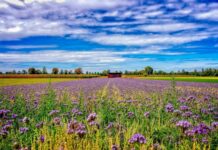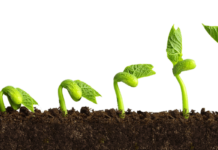
Africa’s voice on sustainability has considerable significance this year as the continent hosts COP27 (27th Conference of the Parties) in Sharm el-Sheikh, Egypt, from 8th to 20th November 2022. The gathering is an opportunity to rally the planet towards more effective climate action on home ground, highlighting the unique challenges that plague Africa. The continent contributes about 4% of all global emissions yet it is the most threatened by climate change. Therefore, the ask is for both global audacious ideas such as evolving financial markets, and local homegrown solutions that drive immediate change locally.
The latter is easily Africa’s magic in delivering material change in communities. Pioneers like Wangaari Mathai led a cultural shift that borrowed from local knowledge’s relationship with the environment to deliver incredible results. For this generation, the ask is to amplify that commitment, and collectively drive the shift from linear economies to circular economies. This means shifting our approach from take-make-dispose, to rethink-reduce-repurpose.
In South Africa, amongst many community initiatives are three flagships that capture the fundamentals of circularity at their core and are each, a promise for an improved food manufacturing sector. Sustainability artist Dillon Marsh captured these initiatives in his latest exhibition, From Linear to Circular. The body of work profiles the convergence of local knowledge, technology and communities and helps make easier and clearer, a conversation on making sustainability more accessible to all.
In one of the series in this body of works, Marsh focused on Skimmelkrans in George, Western Cape, a family-owned farm that is working with Nestlé East and Southern Africa to become Africa’s first net zero dairy farm. The partnership uses regenerative agriculture practises that mimic nature. Marsh’s artwork profiles this pilot project, clarifies the impact of the various interventions on the farm, showing the impact of rethinking operations, reducing material use and repurposing many by-products.
At Skimmelkrans, natural animal feed is used, water is conserved, to ensure the best nutrition for the herd, so that they in turn can produce the best milk. It’s a cycle of care and virtue that makes the earth go round.
Active water conservation measures at Skimmelkrans save 292,500 kilolitres a year through irrigation, and 21,900 kilolitres a year through recycling.
Cattle manure, left untreated, is one of the biggest contributors to global warming. At Skimmelkrans, the pressing and separating of manure into solids and liquids is helping to prevent 500 tons of carbon dioxide per cow per year from entering the atmosphere.
10 metric tons – the estimated mass of carbon captured in the ground in each hectare through the process of crop photosynthesis and sequestration. Skimmelkrans is 600 hectares in size and would therefore capture 600 such masses of carbon each year.
In 1921, the farm yielded 200 litres of milk per day. A century later, that daily figure has risen to 24,000 litres. On average, milk production has increased by 55 kilolitres per month due to the advancements made on the farm. The milk from the farm is used to make NESTLÉ NESPRAY, NESTLÉ EVERYDAY, NESTLÉ CARAMEL TREAT, NESTLÉ SWEETENED CONDENSED MILK. The productivity of lactating cows plays a key role in making dairy farming more sustainable and reducing the carbon footprint of our operations.







